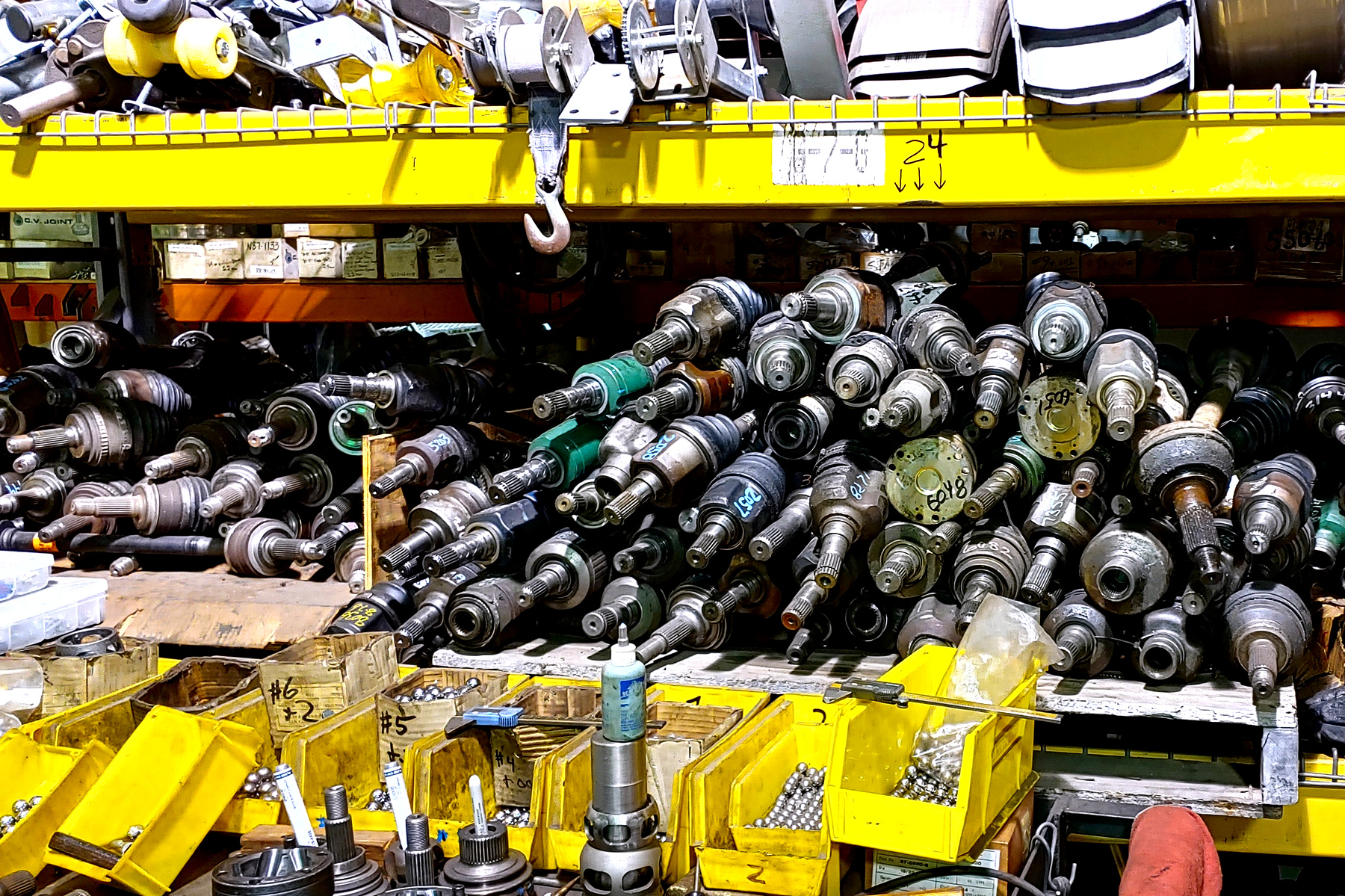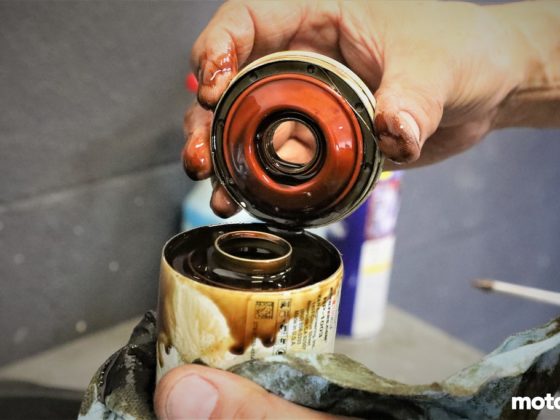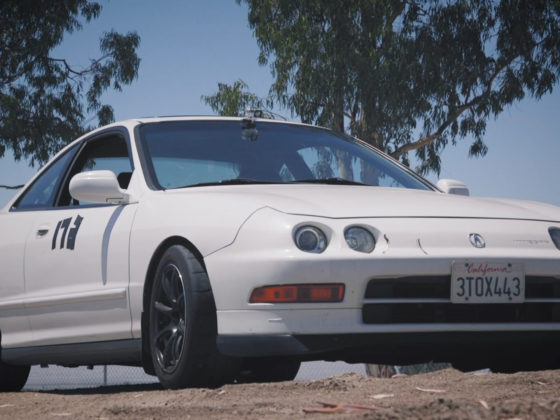
The front lowers went together pretty easily and you can see the swaybar end link did as well. Now it was time to put the knuckle back on!

One word of warning/caution, though: My FUCA ball joints weren’t in amazing shape. They weren’t super sloppy or clicking or anything like that. But they did have a tendency to rotate inside the control arm. I had to use a ratchet (not an impact) to very, very, very slowly tighten the upper castle nut onto the ball joint. A power tool just spun the nut and the entire ball joint together as a unit. If you find yourself in a panic because your ball joint is spinning, just stop, relax, and take it slow.
Soon enough I’ll get the FUCAs replaced with Figs pieces as well. I just couldn’t budget it right now.
With the front suspension essentially back together, it was time to move on to the rear.

Then I got the knuckle on and started attaching the various arms to it.

Except for the swaybar. Oops. Fun fact: you can’t rotate the rear swaybar up into place because now the LCA is in the way. So I ended up having to remove the rear swaybar from the car to get the sway bar arms up over the lower control arm and then I could re-attach the swaybar’s center bushings. Learn from my mistake!
Also notice the humongous hole right above the wheel hub. That had a giant bolt going through it and was what the rear emergency brake assembly was attached to and would rotate around. Since the StopTech rear kit for the SC300 deletes the emergency brake, I simply had CV Source remove everything. Like with the front, the dust shield is gone, too. This is much cleaner than hacking away at things with a cut off wheel.

I spent a good long time cleaning up the washers and bolts and hardware that would attach the axles inboard to the differential. Might as well, right?




10 comments
I would add one thing about bumpsteer. I learned a lot about bumpsteer on a wet AutoX track (the hard way), that I had no idea was happening in the dry. (The bumpsteer came from swapping Upper Control Arms on a EG6 Civic from Driver/Passenger sides in an effort to increase Caster, which is a horrible idea, and totally creates massive bumpsteer.)
If you can drive under wet conditions in a wide open parking lot with cones (ideally, not during an AutoX), I would highly recommend that you do it. Because, dry tracks can mask a lot of ‘issues’ that only reveal themselves under non-ideal, slippery driving conditions. Anyway, it’s better to learn about the effects your suspension/handling adjustments in a controlled environment, rather than during a race.
Don’t be like me, and don’t learn the hard way. Just sayin’.
Overboard is the only way to properly do things. Approve.
Yes, they are good lug nuts but they are milled not forged, not a big difference in 304 stainless though. Even at 10$ the margins are pretty small, cost of production is something like 4.50 so once you get through tax and shipping the profits are like 1.25$ for the producer and 2.50$ for the dealer. Really good lug nuts though, and way more concentric than forged and capped standard lug nuts, puts less stress on the rim.
Stainless lugs nuts? Strange concept to me considering stainless is known for how easily it galls. Certainly not something I would think to put on a race car where the wheels and tires will be on and off frequently. Also, because race car wheels and tires are on and off so frequently corrosion is really a non-issue. I’ve always just gone for cheaper open ended hardened steel racing lugs.
The MSI lug nuts have been in service on my Subaru BRZ since 2015. I have been using with Dorman wheel studs and have yet to run into any issues with them or my wheel studs. My BRZ has seen about 300 ish wheel changes in those 4 years due to it is an autocross car and I swap wheels at or before events and after.
With that said i use a Beta Tools hardened impact socket and a Milwaukee Tool impact for every change. These lug nuts take a beating and look no worse for their time in service.
I used to buy muteki SR48 lug nuts but I also had to replace the every year due to galling and they couldn’t handle the impact socket. This is part of reason why why the MSI lug nuts are hands down the best bang for the buck motorsports lug nut on the market.
Stainless only galls on stainless, even then, only some grades of stainless. Stainless lug nuts on Steel studs with aluminium rims wont gall.
So this answers my question on control arm bushings in your last article.
“forged” lug nuts are useless because they still have to cut the threads. A product that’s obviously not thought through and offer no advantage for more money!
@Simon how does cutting the threads invalidate the forging?
Simon, you cannot roll threads in the ID of something so cutting is acceptable. You may not have compressed stress and grain refinement in the thread roots but you will still have good grain structure in the nut body so its not “useless”.